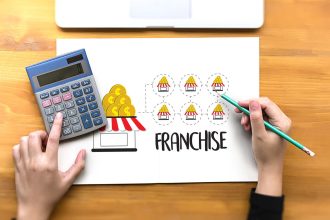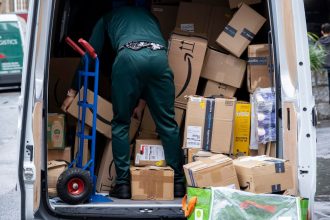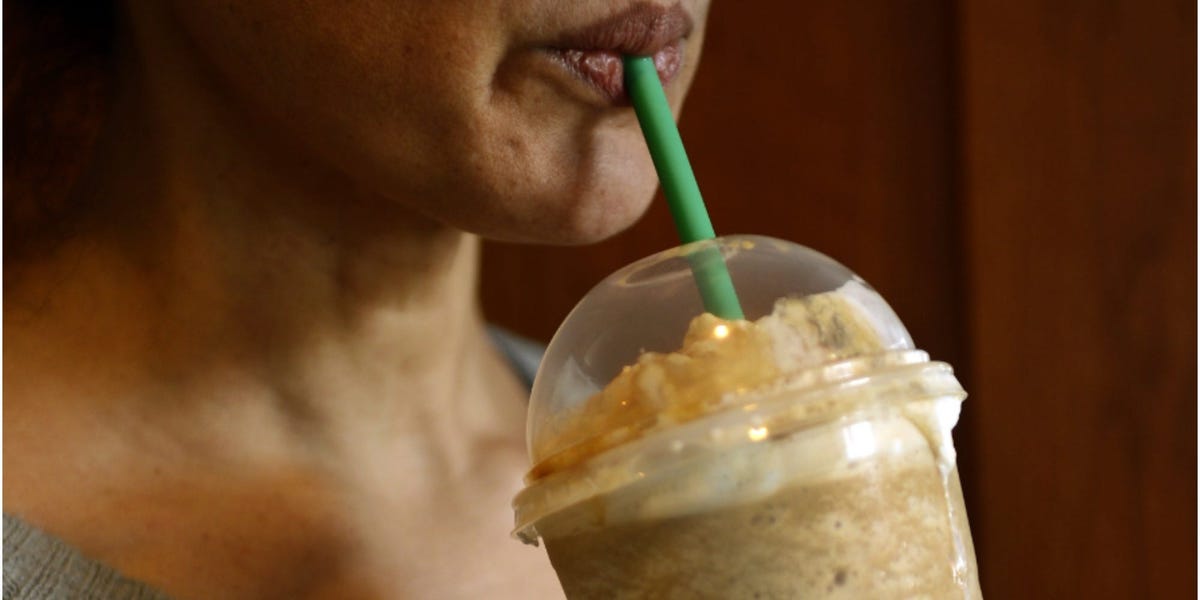- Starbucks dominates the iced coffee market. Cold drinks account for 75% of its beverage sales.
- Tim Hortons wants in on this, too. It’s expanding its range of specialty cold coffees and eyeing further growth.
- Cold drinks tend to cost more, but they can also cause headaches for staff.
More and more customers are shunning piping-hot cappuccinos in favor of fruity cold drinks and iced coffees at chains like Starbucks and Tim Hortons.
Cold drinks account for 75% of Starbucks’ beverage sales.
Sales of cold espresso beverages were up 13% year-over-year in the quarter to July 2, and cold foam, which can only be added to chilled drinks, is the fastest-growing customization at Starbucks, CEO Laxman Narasimhan told investors last week. He also spoke to the success of its Refreshers range – fruity drinks infused with green coffee extract.
At Tim Hortons’, meanwhile, cold beverages now make up 40% of drinks sales in its native Canada, up from about 30% four years ago.
“The team is making good progress with its efforts to become a bigger player in the high-growth cold beverage category and saw cold beverage sales grow 16.6% year-over-year,” Restaurant Brands International CEO Josh Kobza said. In the first quarter of 2023, cold brew sales had doubled compared to the same period in 2022.
Kobza said that Tim Hortons’ Canadian sales were boosted by the expansion of its range of cold, fruity Quenchers drinks, as well as innovation in specialty cold coffees. The chain, which focuses on doughnuts, coffee, and tea, has more than 5,600 locations globally.
Tim Hortons’ cold drinks menu looks remarkably like Starbucks’ – especially in the US. Customers in the States can turn to Tim Hortons’ for nitro cold brew, iced tea, iced caramel macchiatos, and a range of fruity Refresher drinks in place of the Quenchers. It even sells a white chocolate macadamia cream cold brew with cold foam – a near exact replica of a drink that Starbucks launched just a few weeks beforehand.
Tim Hortons execs said that comparable sales were up 12.5% in the second quarter. “Cold beverage was a really big contributor,” Kobza said.
Starbucks is known for its frappuccinos — creamy iced beverages which are available in both coffee and crème versions. One Starbucks shift supervisor in Maryland previously told Insider that the chain was becoming a “frappuccino factory,” while a barista in Nebraska remarked that a lot of the drinks the chain sells “seem like milkshakes rather than coffees.”
“Cold has kind of taken over,” Starbucks’ then-interim CEO Howard Schultz said at the company’s November earnings call. “Cold has certainly surprised us all at Starbucks.”
Considerably more Gen Z consumers ordered cold coffees than hot coffees in the first half of 2022, according to a survey by market-research company Mintel. “The younger you go, the colder the beverage,” Starbucks CMO Brady Brewer told investors in November.
Part of this could be that they’re more Instagram-worth for a social-media generation, with their clear plastic cups showing off the drinks’ layers and the ability to add various attractive creams, syrups, and drizzles. In summer 2021, Starbucks baristas were flooded with orders for iced white mochas with vanilla sweet cream cold foam and extra caramel drizzle after the drink went viral on TikTok.
Cold drinks can potentially reap higher profits for coffee chains because they tend to cost more and some customers opt for costly modifications. The viral iced white mocha at Starbucks, for example, typically cost more than $7. Brewer told investors in November that many customers, especially younger ones, opt to customize their cold drinks and add plant-based milk. Tim Hortons, similar to Starbucks, lets customers personalize their drinks with various milks, syrups, and extra espresso shots.
But cold drinks can cause headaches for staff. Baristas told Insider that some cold drinks caused problems with mobile ordering because they could melt if customers didn’t collect their orders quickly enough, and sometimes they’d have to remake them.
Read the full article here





